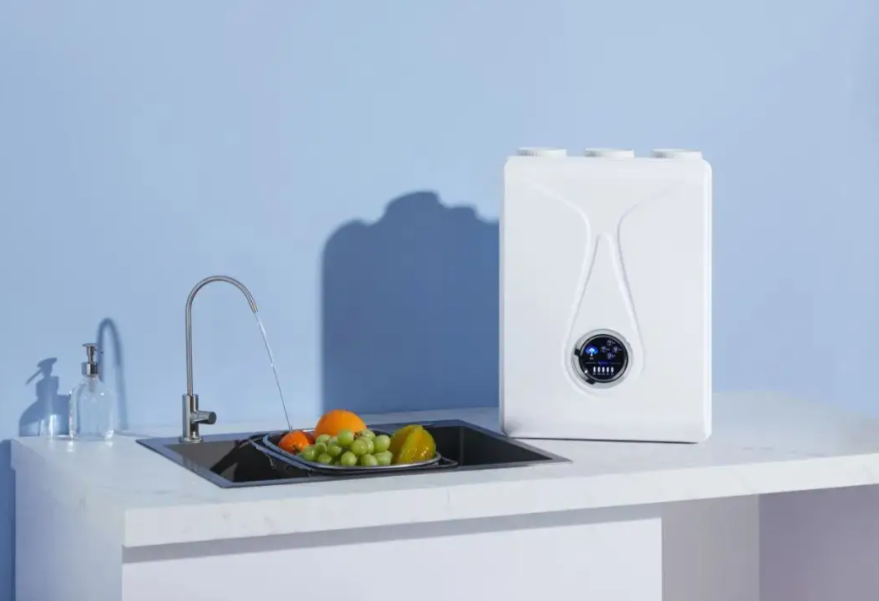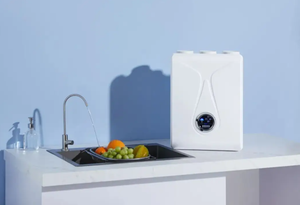
How to test a water purifier? Inspection and Audit Services for Warehousing and Factory Inspection
Water purifiers, as the key equipment for ensuring the safety of household drinking water, their quality directly affects the health of users. The quality inspection of water purifiers is a systematic project, covering the entire process of quality control from raw material entry to finished product exit. This article will deeply analyze the factory inspection and inspection process of water purifiers, the key points of quality control and the testing standards, providing comprehensive reference guidelines for purchasers, quality inspectors and production enterprises.
I. Basic Knowledge of Water Purifiers and Preparations Before Inspection
(1) Working Principle and Technical Core of Water Purifiers
A water purifier is a water treatment device that performs deep filtration and purification on water based on its usage requirements. Its technical core is the filter membrane in the filter element, and the main technologies come from two types: ultrafiltration membranes and RO reverse osmosis membranes. Through a multi-stage filtration system, a water purifier can effectively remove impurities such as rust, sand, colloids, bacteria, viruses, heavy metals, etc. from the water.
(II) Preparations before Inspection
Technical document review: Check product specifications, filter certification certificates (NSF, Ministry of Health approval documents), and quality control plans
Verification standard confirmation: Clearly define the applicable national standards (such as GB/T 30307-2013 "Domestic and Similar Use Drinking Water Treatment Devices") and the customer's specific requirements
Calibration of testing equipment: Ensure that water quality detectors, pressure testing equipment, flow meters and other instruments are within the calibration validity period.
Sampling plan determination: Based on the batch size, the sampling quantity and acceptance criteria are determined in accordance with GB/T 2828.1
II. Key Points for Factory Inspection of Water Purifiers
(1) Quality Management System Audit
Check whether the factory has established a complete quality management system (ISO9001 certification)
Review the supplier management procedures, particularly the evaluation records of key raw material suppliers such as filter elements, membrane materials, and plastic parts.
Review the production process control documents and their implementation status, with a particular focus on key procedures such as filter assembly and sealing tests.
Evaluate the effectiveness of the control procedures for non-conforming products and the corrective and preventive measures.
(2) Key points of on-site production inspection
Cleanroom management: Check the cleanliness control measures in the filter assembly workshop
Incoming Material Inspection Area: Review the inspection records of key components (filter elements, membrane shells, sealing rings, valves, etc.)
Production line layout: Evaluation of anti-contamination measures and rationality of the process flow
Key process control: Focus on processes such as filter installation, sealing test, and overall machine performance test.
Finished Product Inspection Area: Ensure that all inspection equipment is complete and functioning properly, and that the inspection records are complete and traceable.
III. Inspection Standards and Methods for Water Purifier Products
(1) Appearance Quality Inspection
Inspection of shell material: The ABS plastic material complies with the ROHS requirements, and the structural color meets the specified requirements.
Surface quality inspection: No severe fingerprints, scratches, bubbles or shrinkage cavities or other defects.
Dimension accuracy inspection: The clearance between each component is uniform, and the difference is no more than 0.2mm.
Identification check: The screen printing is clear and firmly attached. It passed the adhesion test (the area that fell off in the scratch test was ≤ 5%).
(2) Performance Testing Items
Pressure Resistance Test:
Test conditions: The water source is muddy water with a pressure of 5 kg/cm³.
Passing standard: No leakage for 10 consecutive minutes
Notes: The pressure adjustment should be smooth and steady to avoid sudden pressure fluctuations.
Test of total water output of the entire machine:
Test conditions: Tap water pressure 2 kg/cm³
Passing standard: The water output within 1 minute should be ≥ 3000 mL.
Testing tools: standard graduated cylinder, timer
Filtering effect test:
Test for yellow water: The yellowish water should turn into clear water after filtration.
Removal rate test: The removal rates of heavy metals, residual chlorine, bacteria, etc. meet the standard requirements.
Functional Testing:
The switch operates flexibly without any jamming.
The filter life indicator is functioning properly.
Automatic washing function is normal (if equipped)
(3) Reliability and Durability Testing
Full-box drop test: A 100 cm drop from a height of 3 angles and 6 surfaces. The product remains intact.
Vibration test: Conducted an 8-hour vibration test according to the standard. The filter element showed no carbon leakage.
High and low temperature test: 70℃ for 1 hour at high temperature, -20℃ for 1 hour at low temperature, and this cycle is repeated 3 times.
Salt spray test: The electroplated parts passed the 72-hour neutral salt spray test.
Fatigue test: The switch rotated normally for 100 to 150 times without any abnormalities.
(4) Hygiene and Safety Testing
Hygiene performance test: The hygiene safety of the water treatment core complies with the requirements of GB/T 17219.
Material dissolution test: Confirm that no harmful substances are released from plastic parts and rubber parts.
Microbial contamination test: The total bacterial count of the entire machine's soaking solution meets the limit requirements.
IV. Common Quality Issues of Water Purifiers and Key Inspection Points
(1) Common Non-conformities
Critical Defects: Failure to meet hygiene and safety standards, non-compliance with electrical safety (such as exposed electrical components)
Main defects: Water leakage, insufficient filtration effect, and insufficient water output.
Minor defects: Appearance flaws, packaging issues, unclear labeling
(2) Control of High-Risk Aspects
Filter element quality control: Thoroughly verify the qualifications of filter element suppliers, and conduct performance tests for each batch.
Sealing system inspection: Focus on processes such as the installation of sealing rings and the matching of threads.
Assembly process control: Preventing missed installations and incorrect installations, especially for small components such as sealing rings and springs
Factory inspection: Ensure that each product passes the pressure test and basic function test.
V. Inspection Rules and Sampling Plans for Water Purifiers
(1) Defect Classification Criteria
Critical Defect: Issues that violate safety regulations and may pose a threat to life.
Major Defect: Issues that affect the performance and quality of the product.
Minor Defects: Issues that do not affect the main functionality but do impact the appearance of the product.
(2) Sampling Inspection Plan
Incoming Material Inspection (IQC): For key raw materials such as filter elements and plastic parts
Process Inspection (IPQC): Focuses on monitoring key processes such as filter assembly and sealing tests.
Outgoing Quality Control (OQC): Conducts sampling inspection in accordance with GB/T 2828.1
(3) Special Test Sampling
According to the ISO-2859 S-1 sampling standard, sampling tests are conducted for items such as drop tests and vibration tests.
VI. Packaging, Storage and Transportation Requirements
(1) Packaging Inspection Points
Packaging materials: The color boxes, plastic films, etc. used for packaging are free from damage and deformation.
Packaging method: Complies with customer requirements and has sufficient protective performance.
Identification information: The product information is consistent with the actual product, and the printing is clear.
Attached files: The user manual, the certificate of conformity, and the warranty card are all complete.
(II) Storage and Transportation Management
Storage environment: Well-ventilated and dry, avoiding direct sunlight.
Stacking requirements: According to the packaging label instructions, do not exceed the maximum stacking level.
Transport protection: Measures for preventing moisture, shock and damage during transportation are in place.
VII. Conclusion
The quality inspection of water purifiers is a comprehensive project that covers various aspects such as hygiene safety, performance during use, and environmental adaptability. The inspection personnel need to have a thorough understanding of product standards, inspection methods, and common quality issues in order to effectively control product quality. Manufacturers should establish a complete quality management system, especially strengthening control over filter core quality, sealing performance, and hygiene safety management, to ensure that the products meet national standards and customer requirements.
By conducting rigorous supplier audits, controlling the production process and conducting final product inspections, the quality risks of water purifiers can be effectively reduced, ensuring the safety of consumers' drinking water, and simultaneously enhancing the market competitiveness of enterprises. The water purifier inspection methods and standards provided in this article are expected to offer practical guidance for quality management in quality inspection personnel, purchasers and production enterprises.
Share this product

How to test a water purifier? Inspection and Audit Services for Wareho
Water purifiers, as the key equipment for ensuring the safety of household drinking water, their quality directly affects the health of users.
